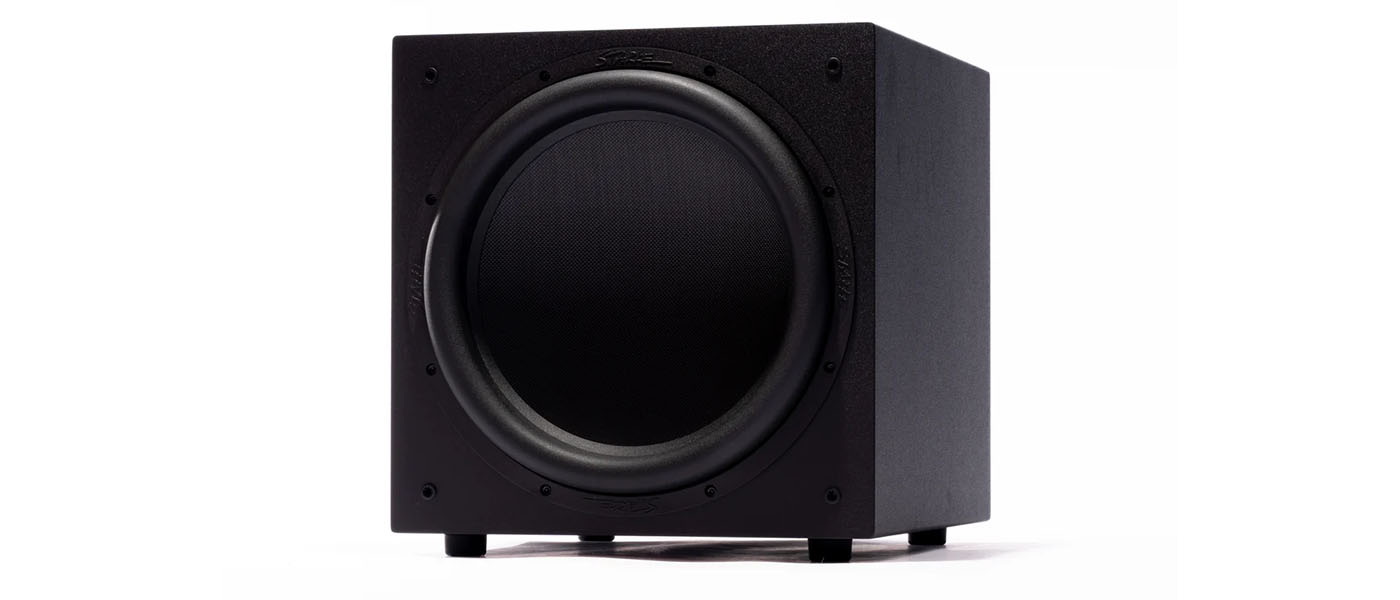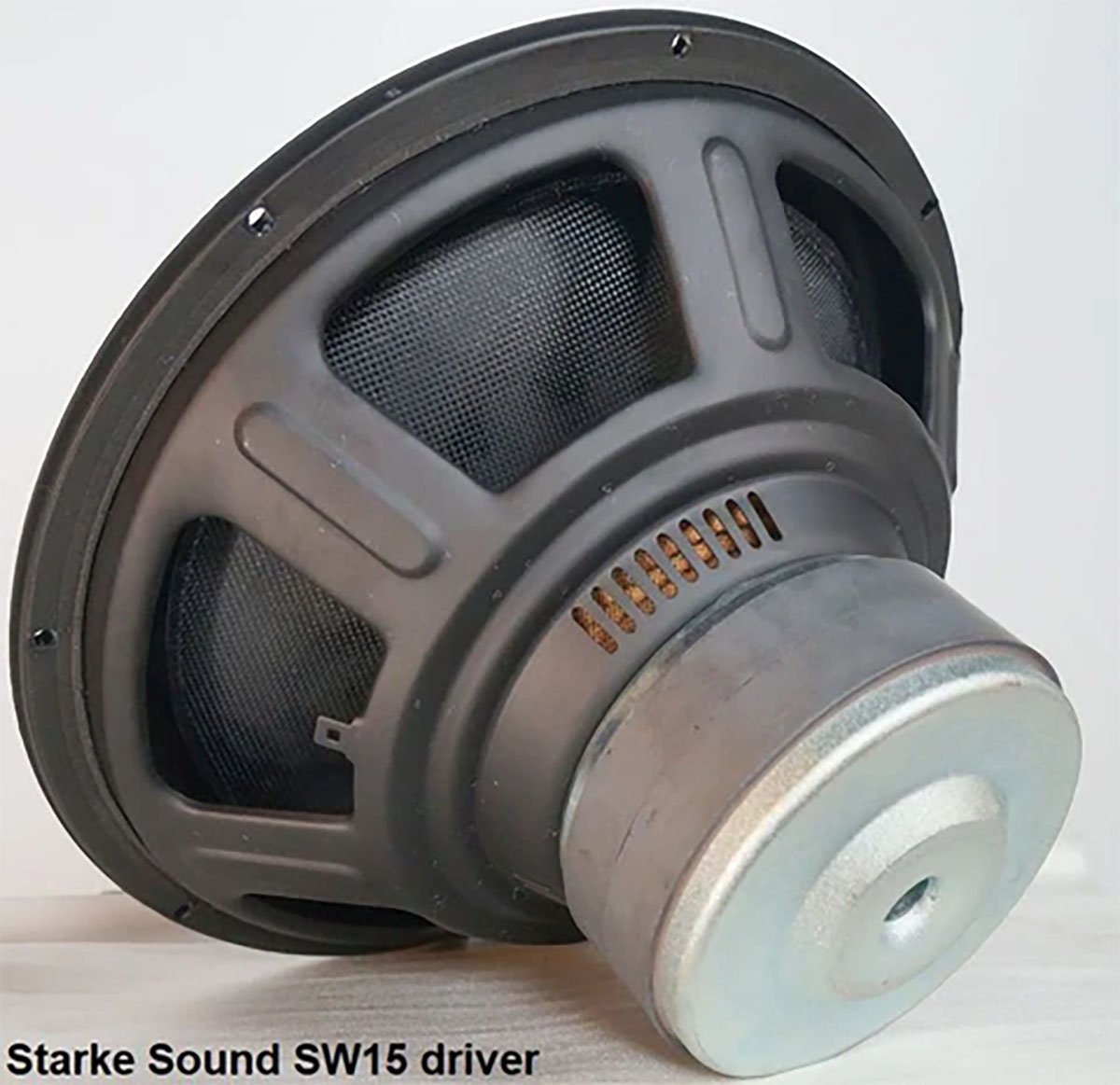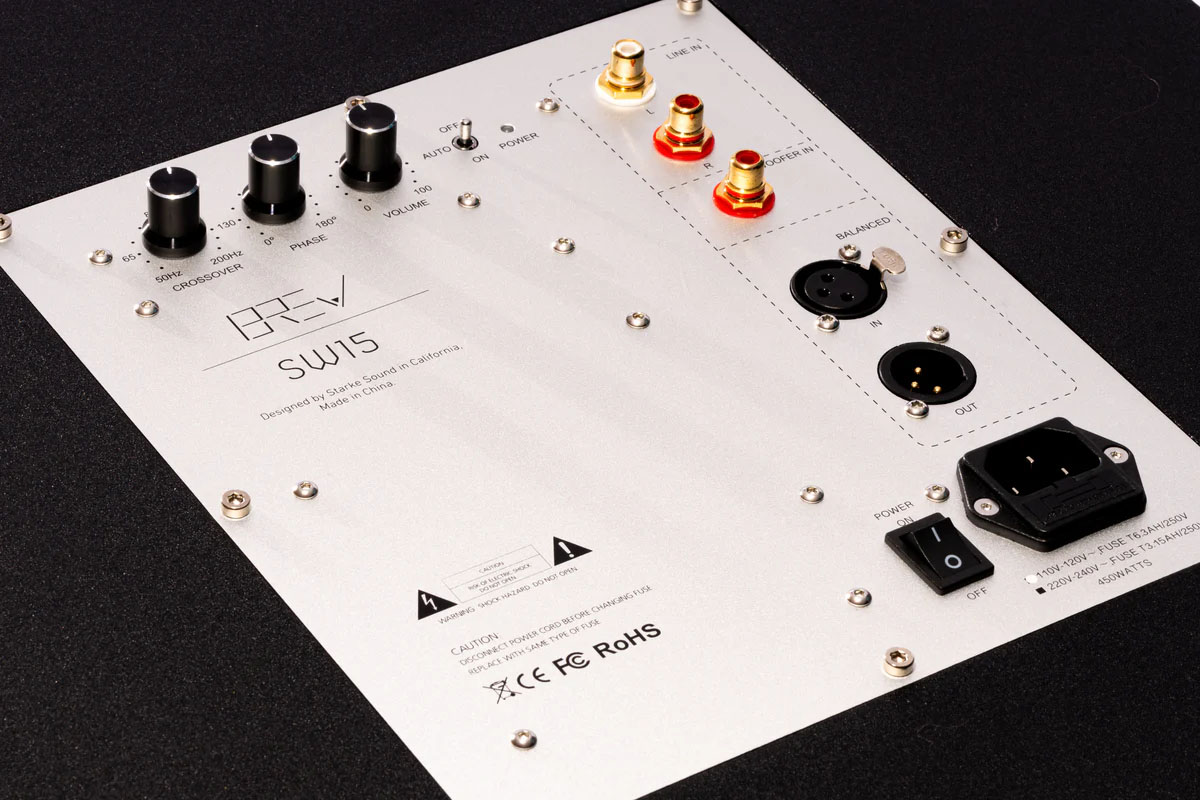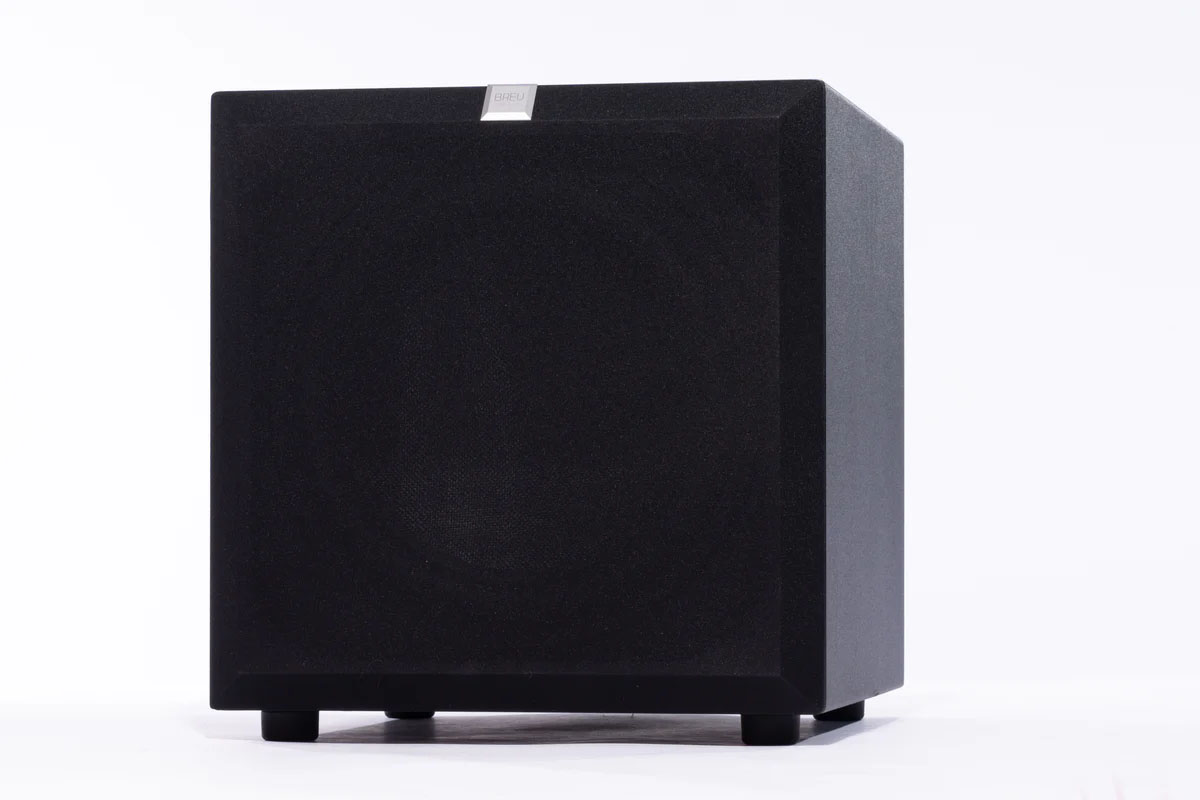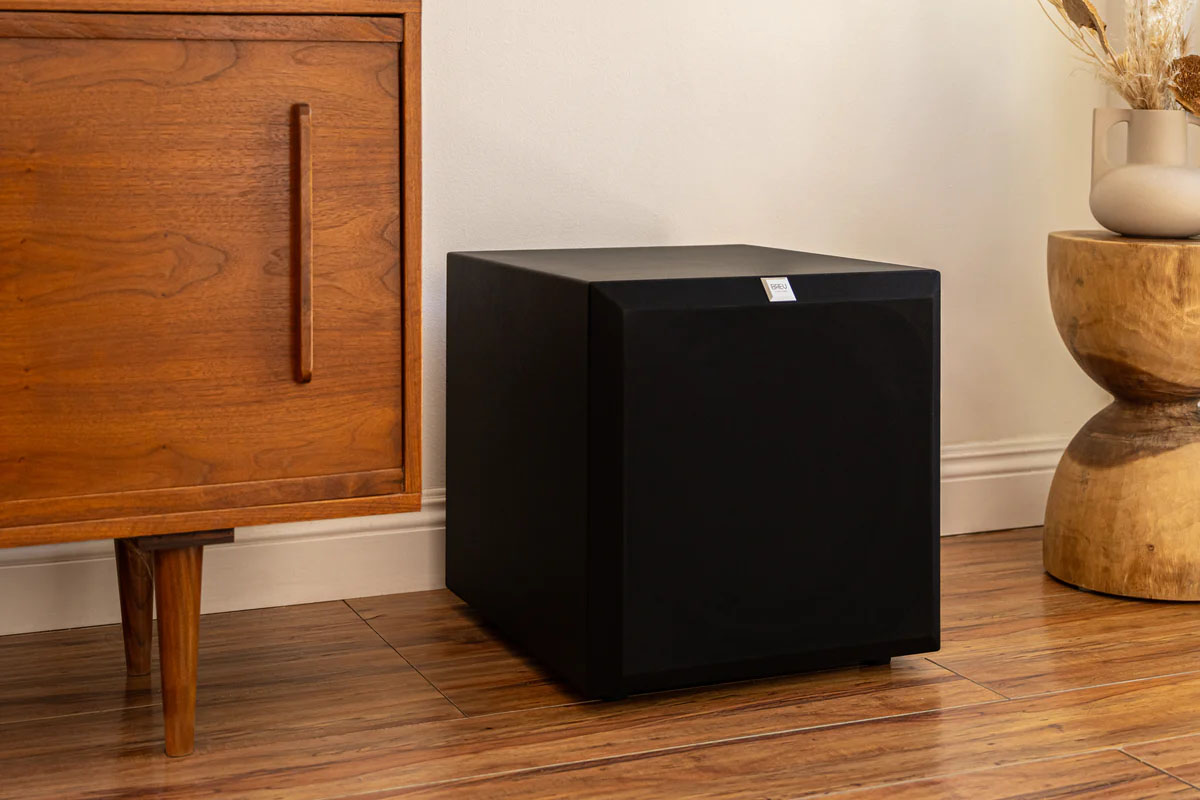Starke Sound SW-15 Subwoofer
- Compact design for a 15-inch subwoofer
- Sealed system which allows extended bass with room gain
- Serious pedigree with decades of experience behind the design
- Affordable price
- Easily stackable for dual units
- Powerful amplifier
- Multiple inputs including XLR
The Starke Sound SW-15’s driver was designed by renowned subwoofer expert Dan Wiggins. Mr. Wiggins has many years of experience designing loudspeakers, especially subwoofers, and as the chief engineer/owner at Starke Sound, his considerable talents were put to good use. He has always valued linearity in the 40-120 Hz bandwidth (which is where most bass occurs) with the same fervor as the lowest two octaves (10-40 Hz). Mr. Wiggins designed the 15-inch driver as a high efficiency unit with an ‘ultra fast voice coil’ to ensure that the SW-15 will deliver a proper response for both music reproduction and movie spectaculars.
Describing a subwoofer, especially a sealed unit such as the SW-15, is a much simpler task than is the design work needed to build such a unit. An abundance of technology has gone into the SW-15, and its performance, both in measurements and in listening tests, showed it is an outstanding value for the $899 retail price.
Driver:
one x 15 inch
Amplifier:
475W RMS (950W short-term)
Max SPL output:
116dB (1m)
Frequency response (±3dB):
14-240 Hz
Crossover:
50-200 Hz
Driver specs:
1-piece glass fiber cone
Cabinet type:
Sealed system
Signal level terminals:
XLR balanced input and XLR balanced output
RCA stereo inputs:
one pair
Dimensions:
H 17.3 x W 16.5 x D 18.9 inches
Weight:
55 pounds
MSRP:
$899
Website:
Company:
SECRETS Tags:
starke sound, sw-15, subwoofer, sealed subwoofer, subwoofer review, home theater, surround sound
- Beauties and the Beasts: A Tale of Five Subwoofers
- Klipsch RP-1600SW Subwoofer Review
- KEF KC62 Subwoofer Review
Secrets Sponsor
The Starke SW-15 arrived safely in a double box package with ample padding. Its moderate size and weight of less than 60 pounds made set up relatively easy. It was quickly easy to ascertain that stacking a pair or even putting quad SW-15’s together would be a simple task.
The system used with the SW-15 was a Marantz AV10 pre-amplifier / processor and an AMP10 power amplifier. A Panasonic UB-9000 universal player handled all DVD and CD duties, with Audioquest cables and power conditioners connecting the system from electrical outlets to the speakers.
The primary speakers consisted of Definitive Technology DM70 towers, DM30 center channel and a pair of Axiom M3s handling rear speaker duties for a 5.1 system.
Measurements and analysis:
The SW-15 was placed in the same corner in which over 150 subwoofers have found themselves being tested over the last 25 years. This location is exceptionally consistent for both measurements and listening experiences across every subwoofer we have tested in our dedicated theater room. After setup and calibration with the Marantz AV10’s Audyssey XT-32 was completed, a sine wave sweep was then run from 10 Hz to the 50 Hz crossover to the main speakers. Gain was increased until audible distortion was heard, then it was lowered by one dB to eliminate any audible distortion.
The SW-15 was four meters from the listening position and managed to average 104 dB from 10 Hz to 50 Hz without any audible distortion or other noises. At 105 dB, there was a noticeable bottoming of the SW-15’s driver, meaning we had a solid ceiling at the 104 dB level. This is quite an impressive SPL (Sound Pressure Level), especially considering the bandwidth extended to 10 Hz. Before we analyze the response curve, a quick tutorial about response curves in a real room is in order.
Sealed subwoofers tend to have what is known as a ‘knee’ It is at this point where the subwoofer will start to roll off as we descend into bass notes deeper than the ‘knee’ at a rate of 12 dB per octave.
For example, from 40 Hz to 20 Hz is descending one octave. If the ‘knee’ was at 40 Hz, and the subwoofer were capable of delivering 105 dB at 2 meters at 40 Hz in a 4-pi setting (think from a pole 100 feet high, where no boundaries can have an effect as 4 pi), the sealed subwoofer would deliver 93 dB at 20 Hz and 81 dB at 10 Hz. Then we have ‘room gain,’ which also acts below a certain frequency. With room gain, the response from a subwoofer INCREASES at the same 12 dB per octave rate that the subwoofer naturally rolls off. Put simply, the roll off naturally occurring with the subwoofer is offset by the gain of the room. It is a wonderful trait, and when used properly, can make for a deep response curve in a real room. As a sealed subwoofer, the SW-15 was able to benefit from room gain, which starts at about 30 Hz in our room. The response curve itself was +/- 1.5 dB from 10 to 50 Hz, which is an excellent curve.
Our listening room is about 4800 cubic feet and opens to an even larger room. In a room that is 20 x 15 x 8 feet (2400 cubic feet) one typically would get close to 110 dB on peaks across the 10-50 Hz bandwidth. Once again, this is excellent performance. Starke Sound states on its website that the SW-15 is suitable for larger rooms, and the measurements back up this claim.
One unusual aspect of the SW-15 is its apparent lack of a high pass (low cut) filter in the deepest bass. If a 10 Hz signal is present, the SW-15 will deliver it. While this can limit the subwoofer’s ultimate output above 20 Hz on challenging tracks, I find this a terrific vote of confidence in the ability of the SW-15 to remain composed, even when delivering infrasonic bass.
When one considers that one could increase the output by 6 dB by stacking a second SW-15 for a $1798 package, we are looking at a real bargain.

The King’s Man
Set primarily in Europe during World War I, ‘The Kingsman’ is a prequel to the previously released Kingsmen movies. It is also an excellent demo disc, with bass galore. The most impressive scenes were the battle scenes, and in several cases, an explosion would propel a soldier across the battlefield. The slow, rolling infrasonic bass would be felt, and heard, as the frequency increased. Every bass scene was delivered with excellent power and depth, even in our large room. And the quality was so good that I found myself wondering what a pair – or even a quad pack – would sound like in our jumbo-sized theater room.
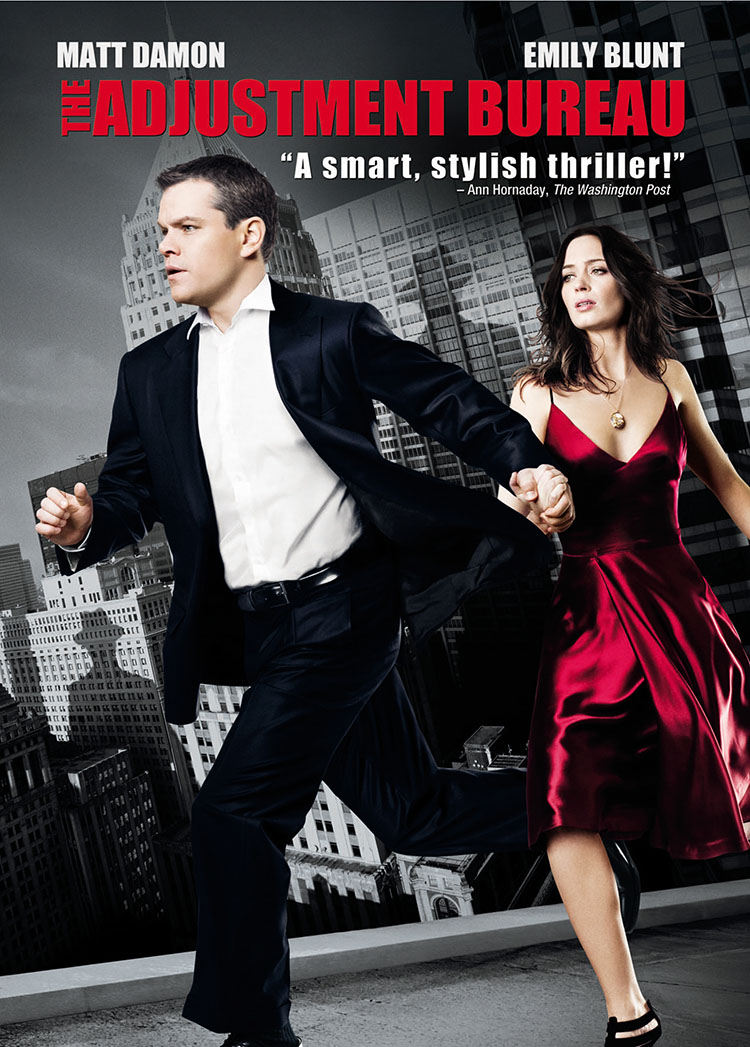
The Adjustment Bureau
‘The Adjustment Bureau’ is an entertaining movie with a well-developed plot featuring politician David (Matt Damon) and ballerina Elise (Emily Blunt). The plot has David and Elise in a series of adventures while being observed by ‘The Adjustment Bureau,’ an organization of supreme beings who are tasked with making sure humanity follows ‘the plan.’ As humans, we tend to get sidetracked quite a bit, and the movie is entertaining from start to finish.
During the many special effects and chase scenes, the intensity of the scene is enhanced by various levels of powerful pulses in the deepest bass regions. The SW-15 was quite adept at delivering both high quality and powerful bass. I do have to admit that it was good enough that I found myself wanting a quad pack, just for sheer power. That being said, the level and depth of the single SW-15 was very impressive. The agile nature of the Wiggins designed system was easily heard, with lightning-fast responses to percussive bass.

Steely Dan: “Aja”
‘Aja’ is known as a great bass test for two songs: ‘Black Cow’ and the title track ‘Aja.’ Black Cow opens with that familiar powerful bass pulse/kick drum that music lovers and audiophiles have loved for 47 years. The SW-15 was nothing short of outstanding, delivering all of the gut-wrenching power of this track.
Moving to Aja, the emphasis is more in the 40-80 Hz range, with the drum work being the difficult test. During the long instrumental, the drums are done with a rapid, rolling series that all too many speakers muddy the performance to varying degrees. The SW-15 shows off its ability to handle rapid fire bass easily and is definitely a great choice as a subwoofer for the music lover.
Secrets Sponsor
The Starke Sound SW-15 Subwoofer delivers premium performance for an astonishingly low price. You can use the money you save to buy more subs.
- Deep bass that is also taut
- Simple setup
- Agile bass on any type of music
- 10 Hz floor for an affordable price
- XLR daisy-chain availability
- Nothing of consequence at this price
The Starke SW-15 subwoofer is an impressive product with a price tag that is so reasonable that some people may pass it by because there is no way an $899 subwoofer can be this good. That would be a tragedy. Let us explore the possibilities that this subwoofer presents.
- As a single unit, an SW-15 will deliver deep, taut bass down to 10 Hz in room. In most rooms, it can do so at SPL levels in the 104-107 dB range at the typical listening position, which is powerful enough for an authentic movie experience at industry standard levels of loudness. Its music performance is first class, and the Starke SW-15 gets a hearty recommendation.
- A pair of Starke SW-15’s will allow for additional SPL (typically 6 dB in room) plus, depending on the room, smoother bass by separating the subwoofers. Many of today’s receivers and processors have two subwoofer outputs along with the ability to run room correction on each subwoofer. Dual SW-15s offer a major step up in performance while staying affordable at $1798.
- Next, let’s look at a quad-pack of SW-15’s. This will most likely appeal to the enthusiast looking to achieve 115 dB or more across the 10-50 Hz bandwidth. For the $3596 investment, one gets 3800 watts of peak power along with four long-throw 15-inch drivers. These could be set up as dual-stacked subwoofer pairs or in a ‘four corners’ arrangement if the room requires even more smoothing of the response curve. The XLR output will allow easy daisy-chaining of the subwoofers.
- Finally, the ultimate package with eight SW-15 subwoofers that will deliver 120 dB throughout the 10 Hz and up frequencies with no audible distortion. This system would use the ‘daisy chain’ method. The total system price is $7192, and this is a realistic alternative to many of the very high-end subwoofers on the market that sell for $7000 as a single unit. (Also, a worthwhile consideration for anyone wanting to take full advantage of technologies like Trinnov’s Waveforming or DIRAC’s Active Room Treatment without being put in the poorhouse. Ed)
The Starke SW-15 is a subwoofer designed for someone looking for first-class bass at a value price. You may have noticed it doesn’t have an app or room correction ability. What it does do is deliver exceptional sound quality and power for a bargain price. Considering that most receivers and processors already have room correction such as Audyssey XT-32, Dirac Live, Anthem ARC Genesis, etc. the lack of room correction will not be an issue for most subwoofer purchasers.
Its modular size makes putting multiple subwoofers into one’s system an easy proposition. One could even purchase one unit now and get a major upgrade in a year without having the hassle of selling the subwoofer in order to upgrade. Add a second unit later, and you have instant betterment.
The Starke SW-15 is one of the finest performing bargains on the market today.




